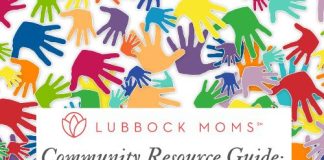I am pretty sure everyone knows by now that October is Breast Cancer Awareness Month. Each year, I take this opportunity to share updated breast cancer facts via social media in the hopes that I can help someone learn something they didn’t know about breast cancer. But every year, I always have that one person who says we are all aware of breast cancer, so why are you still talking about it? Let me make one thing clear: I will not be silent until there is a cure for cancer.
I will continue to talk about breast cancer. I will scream it from the mountaintops every chance I get, for one simple reason: it stole my mother from me. My mother was diagnosed with breast cancer at a time when she felt shamed for it; she felt she had somehow brought it upon herself, and strangers did nothing to quell that shame and guilt. But the fact of the matter is this: my mother did not do anything to cause her own cancer. She did not deserve the diagnosis, prognosis, battle, and death that her breast cancer caused her. My family did not deserve to lose our mother at such a young age. She was 43 when she was diagnosed with Stage III Metastatic Breast Cancer and only 52 when she passed away. My dad became a widower at the mere age of 47. My sister and I became motherless daughters at the ages of 25 and 22, respectively. None of us deserved to have so much taken from us in the name of breast cancer.

So I will not be silent until there is a cure. 2 out of 3 people are surviving cancer; we shouldn’t be silent until that is 3 out of 3. I will continue to update my facts and post them, year after year, spreading the most up-to-date information that I can until there is a cure. I know entirely too many people who have had so much stolen from them by breast cancer to be silent at such young ages. I have had friends diagnosed at the ages of 30, 38, and 40. I have been heavily screened every year since I was 22 and currently have a benign tumor in my left breast. I. Will. Not. Be. Silent. I hope you read on and maybe learn something new today, and please share with all of your friends so that we can FIND A CURE!
- Breast cancer is the most common cancer in American women, except for skin cancers.2
- Approximately 1 in 8 women (13%) will be diagnosed with invasive breast cancer in their lifetime.1
- In 2020, an estimated 276,480 new cases of invasive and 48,530 new cases of non-invasive (in situ) breast cancer are expected to be diagnosed in women in the U.S.2
- Women (and men) with a family history of breast cancer, especially in a first-degree relative (parent, child, or sibling), are at increased risk for the disease. Compared to women without a family history, the risk of breast cancer is about 1.5 times higher for women with one affected first-degree female relative and 2-4 times higher for women with more than one first-degree relative.1
- The majority of women with one or more affected first-degree relatives will never develop breast cancer. Most women who develop breast cancer do not have a family history of the disease.1
- Compared to women in the general population who have a 10% risk of developing breast cancer by 80 years of age, the risk is estimated to be about 70% in women with pathogenic variants in BRCA1 and BRCA2. The risk of breast cancer by age 70 in women with pathogenic variations in PALB2, a different gene that works with BRCA2, is estimated to be 35%.1
- A family history of ovarian and perhaps pancreatic or prostate cancer is also associated with increased breast cancer risk.1
- Breast Cancer incidence rates are highest among non-Hispanic whites (130.8 per 100,000), followed closely by non-Hispanic blacks (126.7). However, non-Hispanic black women have the highest breast cancer death rate (28.4 deaths per 100,000), more than double that in Asian/Pacific Islander women (11.5), who have the lowest incidence and death rates.1
- Breast cancer is about 100 times less common among white men than among white women. It is about 70 times less common among Black men than Black women. As in Black women, Black men with breast cancer tend to have a worse prognosis (outlook). For men, the lifetime risk of getting breast cancer is about 1 in 833.3
- Although breast cancer in men is rare, an estimated 2,620 men will be diagnosed with breast cancer, and approximately 520 will die in 2020.3
- Men with a mutation (defect) in the BRCA2 gene have an increased risk of breast cancer, with a lifetime risk of about 6 in 100. BRCA1 mutations can also cause breast cancer in men, but the risk is lower, about 1 in 100.3
- The warning signs of breast cancer are not the same for all women. The most common sign is a lump or mass in the breast. Other symptoms include persistent changes to the breast, such as thickening, swelling, distortion, tenderness, skin irritation, redness, scaliness, nipple abnormalities, or spontaneous nipple discharge. Early breast cancer usually has no symptoms and is most often diagnosed through mammography screening.2
- Women should have the opportunity to begin annual screening between the ages of 40 and 44. Women ages 45 to 54 should be screened annually. Women ages 55 and older should transition to biennial screening or have the opportunity to continue screening annually. Women should continue screening mammography as long as their overall health is good, and they have a life expectancy of 10 years or more.1
- Breast cancer is the second leading cause of cancer death in women (only lung cancer kills more women each year).2
- In 2020, an estimated 42,170 women will die from breast cancer.2
- The chance that breast cancer will be responsible for a woman’s death is about 1 in 38 (about 2.6%).2
- Since 2007, breast cancer death rates have been steady in women younger than 50 but have decreased in older women. From 2013 to 2017, the death rate decreased by 1.3% per year. These decreases are believed to be the result of finding breast cancer earlier through screening and increased awareness, as well as better treatments.2
- Five-year relative survival is lower among women with a more advanced stage at diagnosis. Considering all races, 5-year relative survival with localized disease is 99%, regional disease is 86%, and metastatic disease is 27%.1
- There are over 3.8 million breast cancer survivors in the United States. This includes women still being treated and those who have completed treatment.1
If you take anything away from this post, please take the importance of getting yourself and your loved ones screened. Learn the signs and symptoms, especially the invisible ones, and have open and honest communication with your doctor to ensure you are getting the necessary care for yourself.

- American Cancer Society: Breast Cancer Fact and Figures 2019-2020 [https://www.cancer.org/content/dam/cancer-org/research/cancer-facts-and-statistics/breast-cancer-facts-and-figures/breast-cancer-facts-and-figures-2019-2020.pdf]
- American Cancer Society: About Breast Cancer [https://www.cancer.org/cancer/breast-cancer.html]
- American Cancer Society: Breast Cancer in Men [https://www.cancer.org/cancer/breast-cancer-in-men.html]









